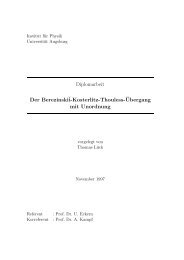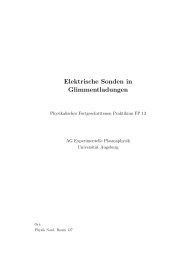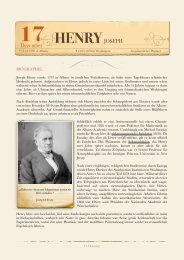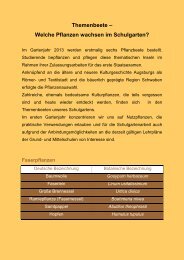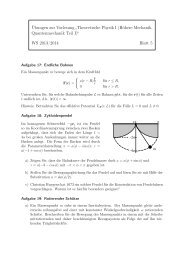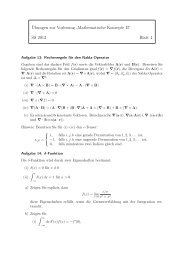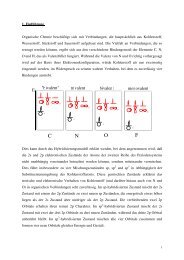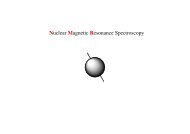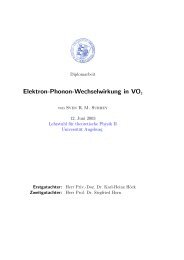PhD Thesis - Universität Augsburg
PhD Thesis - Universität Augsburg
PhD Thesis - Universität Augsburg
You also want an ePaper? Increase the reach of your titles
YUMPU automatically turns print PDFs into web optimized ePapers that Google loves.
20 1. Models<br />
spin-1/2 quantum Heisenberg model<br />
H eff = ∑ 〈i,j〉<br />
(<br />
J ij S i · S j − 1 )<br />
. (1.39)<br />
4<br />
This model describes the physics of the magnetic interactions and hence the low-lying excitations<br />
of the half-filled Hubbard model at U ≫ |t ij | are magnetic excitations; the model<br />
is in a Mott insulator phase (an insulator resulting from electron-electron interactions).<br />
For a bipartite lattice with only nearest-neighbor hopping and J ij = J, the ground state<br />
of (1.39) is proven or expected to exhibit antiferromagnetic long-range order in all dimensions<br />
d > 2 (J > 0). However, in 1D and 2D, antiferromagnetic long range order is not<br />
possible at T > 0 [114, 169], and in 1D, even at T = 0 long-range antiferromagnetic order<br />
is forbidden, so the ground state shows only quasi long-range order, i.e., the antiferromagnetic<br />
correlations between two spins decay algebraically with increasing distance. The low<br />
energy spin excitations in this model are collective spin wave excitations, which in the 1D<br />
case cost zero energy, and the spectrum is gapless, i.e., it has a spin excitation gap ∆ S = 0<br />
[154].<br />
1.4 Extended Hubbard models<br />
Since later we intend to study 1D strongly correlated systems, in this section we mainly<br />
consider extentions to the 1D one-band Hubbard model given by the Hamiltonian<br />
H = −t ∑ i,σ<br />
(c † i,σ c i+1,σ + h.c.) + U ∑ i<br />
n i↑ n i↓ . (1.40)<br />
The one-dimensional Hubbard model has evolved from a toy model to a paradigm of<br />
experimental relevance for strongly correlated electron systems, due to the synthesis of new<br />
quasi one-dimensional materials and the refinement of experimental techniques. Although<br />
it is not strictly a perfect model for any existing material, many of its qualitative features<br />
seem to be realized in nature. At present there is a sizeable list of materials, for which the<br />
electronic degrees of freedom are believed to be described by Hubbard-like Hamiltonians.<br />
However, in all these cases the appropriate electronic Hamiltonians differ significantly from<br />
a simple one-band Hubbard model.<br />
In Chapter 4, we study the ground-state phase diagram of the half-filled 1D Hubbard<br />
model with different extensions using numerical tools such as Lanczos exact diagonalization<br />
and the density matrix renormalization group (DMRG) method. Since in 1D systems,<br />
quantum fluctuations are especially important, due to the restricted dimensionality, and<br />
could cause the system to be unstable against various small perturbations, the assumptions<br />
that lead to the original Hubbard model (1.21) may be too severe. Additional terms



